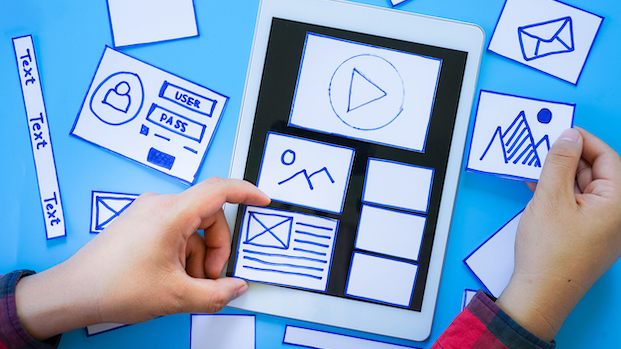December 2019
For products and brands to work well online, professional UX design is indispensable - and above all a central aspect of marketing. Read here what UX (user experience) actually means and how companies can create the best possible UX for their customers.
What does user experience (UX) actually mean?

User experience basically describes the experience that a user has in dealing with software, a website or online content. Whether it is ultimately rated positively or negatively largely depends on the user-friendliness, functioning, aesthetics and stability. UX designers deal with the relevant processes from design to integration of a product or service, which make up a positive user experience. Therefore, these designers also focus on other aspects of the user experience, such as enjoyment, efficiency and fun. Consequently, there is no single definition of a good user experience. It is good if it meets the needs of a particular user in a defined context. UX design follows a consistently user-centric approach. Therefore, the most important aspects of UX design are those that are most relevant to the target audience. Customer-oriented product or service design has what it takes to improve customer satisfaction, increase the registration rate, boost engagement and increase conversion depending on the objectives pursued.
What does user experience (UX) actually mean?
UX design starts with market research. With user surveys and focus groups, UX designers can get a clear picture of their customers' needs and wishes. This analysis then flows into a design and development phase, in which a product, website or service is created according to user needs. This is followed by test phases, for example for usability, to determine whether the actual user behaviour corresponds to expectations. The research results then flow into a new design round and the iterative process is continued until the UX design meets customer expectations. The ideal online customer journey is seamless, dynamic and supported by reliable and individual customer service and compatibility with mobile devices. When it comes to websites, for example, valuable content, usability, functionality, responsive design, navigation and design are considered decisive factors for high-quality UX design.
Mobile first
If a mobile website is not working properly or is difficult to use, users will terminate the process and switch to the competition. However, this does not mean the user experience on the desktop is no longer relevant. The majority of e-commerce transactions still take place on the PC. So a balanced multi-platform strategy is essential for prospective customers. However, this paradigm does not yet seem to be firmly rooted in the minds of many responsible persons. This makes it all the more important that the Marketing and UX divisions work together to promote a "mobile first" strategy. Time is another important factor. According to WebFX, 39 percent of users leave a website if the loading time takes too long. 47 percent of them expect a website to load in two seconds or faster.
In summary, it is clear that UX design and marketing should join forces. Both should focus on the wishes and consequently the satisfaction of the customers. If product design and campaigns are then coordinated, there is a good chance of winning over the interested party or online customer.
Tags
- Digital Marketing
- Digital Trends